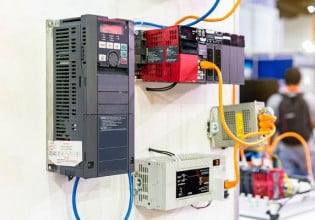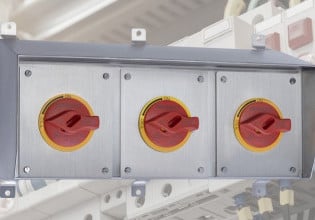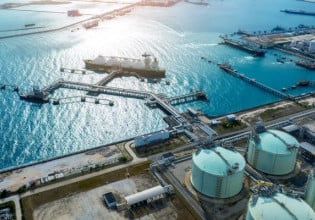Benefits and Limitations of Additive Manufacturing
Additive manufacturing is only one small segment of overall manufacturing. But it might prove to be one of the most efficient, driving us closer to the ability to produce customized parts on demand.
Additive manufacturing involves a number of processes, many of which are familiar to both the hobby and industrial worlds alike.
What are the challenges of additive processes from a mechanical engineering perspective? Do they overcome the potential benefits of these processes?
Additive manufacturing has become more popular over the last decade due to the rise of affordable 3D printers. However, since printing is such a familiar platform, it’s a good starting point for investigating related manufacturing methods.
In very simple terms, additive manufacturing is the group of machining processes that start with raw material and fuse that material together by changing its physical properties in order to form it into the desired shape.
Clarification of Processes
I am not a professional in every one of these processes of additive manufacturing, not by a long stretch. However, as a mechanical engineer-turned-control engineer and maker for life, I have printed parts for projects ranging from structural pieces for CNC machines to robot grippers on integration projects, and countless boxes and keychains for my kids and most of the local schools. Nearly every day for the past eight years I have had one or more parts coming off the bed of my printers at home and in my office.
But even given this experience at my level of application, it falls sadly short of the uses of additive manufacturing throughout the industry Any potential limitations are quickly being overcome by cutting edge techniques and materials.
Additive Manufacturing for Plastics
Two primary technologies dominate the market for additive manufacturing using polymer-based materials. These materials are usually best suited for prototypes of a future metal part to ensure the right fit, or to make a mold for a cast later on. For non-structural parts, this plastic manufacturing may be perfectly suitable. The two main leading technologies in this area are the typical Fused Deposition Modeling (FDM) and Stereolithography (SLA).
The FDM process is where a heated extruder head applies one layer of near-molten plastic at a time. This is our normal “3D printing” process popularized by modern hobby manufacturers. All of these processes together, although they are not all 3D printing technically, are all considered the additive manufacturing processes.
The Strengths of These Processes:
- Single part prototyping for new designs
- Cost of machines
- Cost of raw materials
- Complex geometry is usually quite simple
Potential Weaknesses:
- Deposited layers can create weakened parts if not calibrated perfectly
- Much too slow for mass manufacturing
- Special materials are required for application in corrosive environments, or where food-grade materials are required
These types of parts do not fare well in settings that expose them to high temperatures and high speeds which may create both friction and wear. They become a semi-solid at temperatures less than 200 *C (400 *F), and even the friction caused by sandpaper can cause them to warp. Some material can withstand a higher temperature.
These parts also have weaknesses when exposed to shear stress, which is a load placed in parallel to the layers.
Since the adhesion between layers is the weakest point of bonding, especially if the temperatures are not calibrated perfectly, this kind of stress can lead to failure.

Print head of 3D printer machine printing plastic model.
One benefit of these plastic parts, however, is their flexibility when compared to metal parts, which are often brittle. Some situations require a bit of flex from the part, and this can be achieved quite naturally on plastic parts without leading to cracking.
In some applications, such as custom-designed robot grippers, some sort of spring constant is desirable, such as a pneumatic vacuum gripper. This process would be an excellent choice since the size is relatively small, the geometry might be quite complex, the temperatures are not excessive, and the quantity of those custom grippers will likely be small in number.
Additive Manufacturing of Metals
Using additive manufacturing for metals is a more power-intensive process than plastic, and the raw material is more difficult to work with. Therefore, it is not nearly as common to find metal additive manufacturing than plastic.
The process is much more similar to the SLA than to the FDM. The FDM is the more typical deposition of layers through an extruder as the head moves across the layer and the bed moves down.
In the SLA process, a concentrated light beam hardens a layer of resin in the correct pattern, then the entire part drops down a layer and the process repeats.
Metal manufacturing, or 3D printing, works in a similar fashion. Metal powder is spread in layers on the bed, and a laser sinters, or melts the metal is the correct geometry. The part moves down a layer, the metal powder is spread again, and the process repeats.
One benefit of the metal additive process is that the part may be heat treated after the process is complete, creating a much stronger part.
The Strengths of this Process:
- Custom parts are easy to prototype
- Very little waste from the manufacturing process
The Current Weaknesses:
- The equipment and raw materials are still quite expensive
- All the parts require some post-processing, the part is not installation-ready once complete
- The machines require very highly trained maintenance teams

3D printing machine make of 3D prototype model by resin material.
There certainly are significant challenges shown from both processes - in plastics, the mechanical properties and strength are a weakness, and in metal, the cost of the machines and the parts are a prohibition for common industry integration.
But as with all technology, we should be prepared for emerging technology which will accelerate developments making this technology more accurate, robust and affordable for all industrial markets.
What are some ways you use additive manufacturing?






